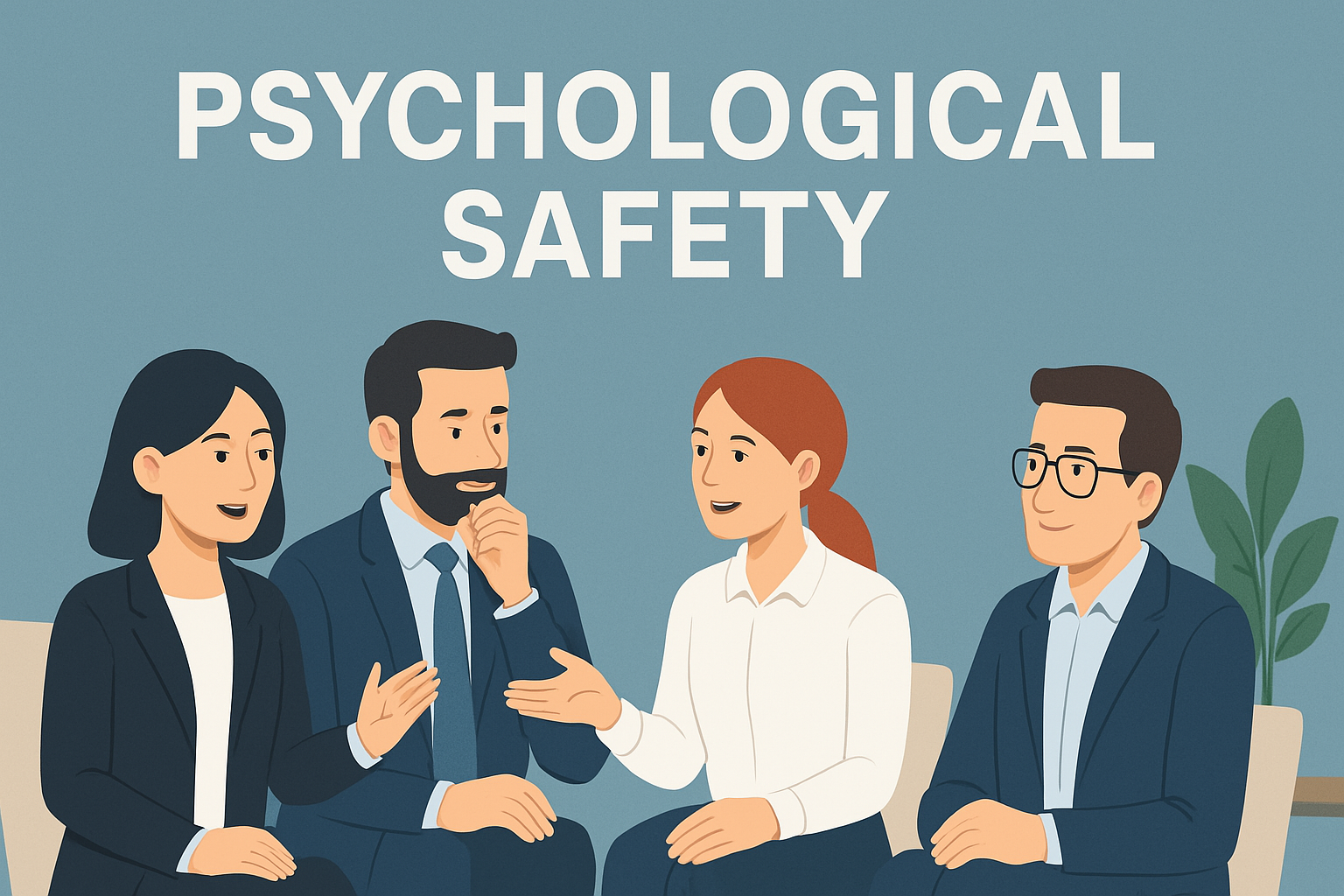Psychological safety: The foundation of high-performing teams
Learn how Psychological Safety increases your productivity and boosts your business. Psychological safety is the key for your success!

As a leader, you’re constantly challenged to drive performance, foster innovation, and build a culture where people thrive. But what if I told you that one of the most powerful drivers of all three is something far more human than any tool or strategy? It’s called psychological safety—a concept pioneered by Harvard professor Amy Edmondson—and it might just be the missing piece in your leadership approach.
Let’s unpack what it really means, why it matters more than ever, and how you can create it in your team.
What is psychological safety—and why should you care?
Psychological safety is the belief that you can speak up, take risks, and admit mistakes without fear of humiliation or punishment. In her research, Amy Edmondson found that the highest-performing teams weren’t the ones that made the fewest mistakes—they were the ones that felt safe enough to talk about them.
Think about that for a moment.
It’s not about perfection. It’s about permission. Permission to say, “I don’t know,” “I made a mistake,” or “I have a different opinion”—without worrying about being shut down, blamed, or side-lined.
This creates a culture where learning happens, ideas are shared freely, and issues get addressed early—before they become problems.
How psychological safety fuels performance
Edmondson’s landmark study in hospital teams found something surprising: teams that reported more errors were actually performing better. Why? Because they acknowledged the errors. They talked about them. They learned from them.
That’s the power of psychological safety—it surfaces the truth faster. And in fast-moving industries where innovation is key and mistakes are inevitable, that truth is your greatest asset.
When your team feels safe to speak up, three things happen:
- You make better decisions because you’re not operating in an echo chamber.
- You catch risks earlier because concerns aren’t hidden out of fear.
- You retain top talent because people want to work where they feel respected and heard.
How to create psychological safety in your team
Here’s the good news: psychological safety isn’t a personality trait or a team’s “vibe”—it’s something you, as a leader, can create. Here’s how I’ve seen it work best:
1. Model vulnerability.
If you want your team to admit mistakes, start by admitting your own. Say “I don’t know” when you don’t. Ask for feedback—and take it seriously. Vulnerability from the top gives permission to everyone else.
2. Respond constructively.
When someone brings you bad news or a dissenting view, how you respond matters more than what you say. Thank them. Ask questions. Avoid jumping to solutions or blame. Your reaction sets the tone for the next conversation.
3. Encourage curiosity over certainty.
Instead of asking “Who’s responsible?”, ask “What can we learn?” Replace “Why did this happen?” with “What would we do differently next time?” These subtle shifts turn fear into learning.
4. Invite participation.
Ask quieter voices what they think. Make space in meetings for reflection before discussion. Rotate who leads. Signal that every perspective matters—not just the loudest or most senior.
A personal note: What I’ve learned from creating psychological safety
When I started shifting my leadership style toward psychological safety, I noticed something interesting. My team didn’t become less critical or cautious. They became more engaged. Problems got solved faster. Conversations got deeper. People started leading without being asked.
But it wasn’t easy at first. I had to check my ego. Let go of control. Be okay with not having all the answers. It’s a muscle you build over time—and one that pays off in ways you can’t always measure, but your team can always feel.
Final thoughts: It starts with you
Amy Edmondson’s research shows us that psychological safety isn’t soft. It’s strategic. It’s not about lowering the bar—it’s about creating the conditions for people to rise to it.
And here’s the truth: people don’t speak up when they feel safe. They speak up when you make it safe.